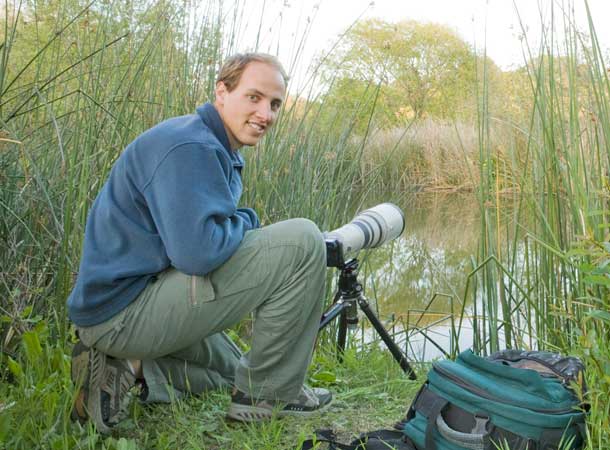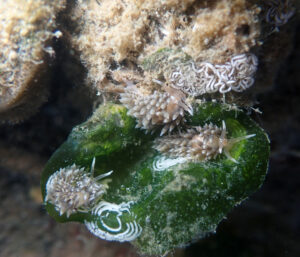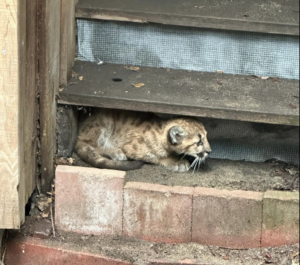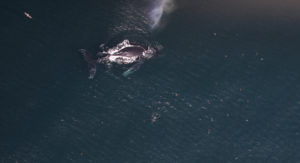Sebastian Kennerknecht has eight shots in our upcoming October-December issue, more than any other photographer this time around.
Partly that’s because he agreed to go out and shoot at the Farallon Islands for a story by Glen Martin about seabird nesting trends on that crucial nesting site. But the photo that really caught my eye as editorial director was this one of a yellow-eyed ensatina at Purisima Creek Redwoods Open Space Preserve, featured in our On the Trail section. (That’ll be out by October 1. Subscribe by September 17 to get your copy!)
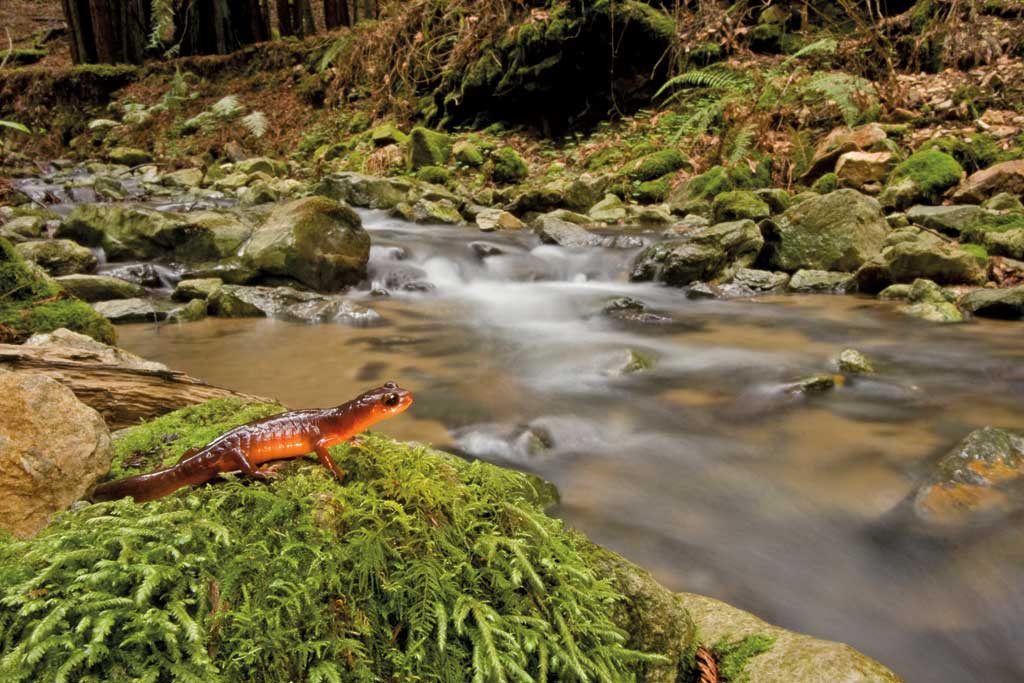
Bay Nature designer Dave Bullen said, “Amazing! Is that salamander ceramic?” Author Lisa Krieger asked, “Is that salamander for real?!”
In the age of Photoshop, it’s easy to assume that amazing images like this are cooked up through montage. Not so for Kennerknecht.
“Every photographer has their own views on postprocessing,” he explains. “I have no problem with that as long as they say they’re doing it. But my own personal stance is that I am not going to add any lighting that I didn’t have there in the field. For me, the fun part is photographing, so why not get it right in the field and spend less time in front of a computer?”
So how did he get this shot?
“Finding the ensatina (a species of salamander) was the hardest part. That probably took a couple of hours. For most of the pictures I take, I previsualize the shot. That one I had imagined for a couple of weeks, and then it was a matter of executing.”
He explains that the front of the camera was maybe two inches from the ensatina, which is only a few inches long.
“Ensatinas don’t move very much once they know you are looking at them—camouflage is their main defense, so they freeze if they know you’re looking at them,” Kennerknecht says. “I have taken 30 second exposures with ensatinas.”
The key for him, then, is knowing what this animal will do under certain circumstances. He studied wildlife ecology in college and started photographing wildlife soon after.
“Ninety percent of wildlife photography is knowing the animal and its behavior: where is it going to be at certain times of year and what is it going to be doing when you get there.”
But there’s some creativity involved as well. Kennerknecht used a slow shutter speed to capture the movement of the water, but then shined a flashlight on the ensatina to give it a sharp, warm appearance. The image of him in the field shining a flashlight on a salamander reminded me of the lengths he went to for another shot we published, of a skunk in his dad’s Santa Cruz backyard. That used an elaborate camera “trap” he assembled and tweaked himself.

“It was kind of a perfect location to set up a camera trap because most likely no one will come and steal it,” he says.
We’re used to seeing camera-trap photos where the animals look startled and washed out by the intense strobe. So why is this so different?
“Many camera traps are models that people can buy off the shelf that use point and shoot technology. I actually have a digital SLR out there in a waterproof housing and there are flashes out there in their own waterproof housings,” he explains. “That’s why the animals don’t become startled: it’s not a flash popping directly in front of their eyes. I know exactly where the animal’s going to be so I can use way less light. It was a 30 second exposure, but the skunk is frozen with the flash right at the beginning. That skunk lives under my dad’s shed and pretty much walks there every night.”
Again, knowing the animal’s behavior is the key for Kennerknecht. He says much of that knowledge comes from simply spending time outdoors, and he’s had his share of memorable wildlife encounters.
“One of the most exciting was getting to spend two weeks with a mom bobcat and her almost-fully-grown cub. I would go to a field where they hunted every evening. They would let me get within 15 yards of them and the cub would sleep in front of me. It was remarkable: They accepted me as something nonthreatening and something not to even be noticed.”
How did that happen?
“It’s just a matter of reading the behavior. There were days when I could see them at 300 yards and they would move away from me, so I would photograph something else that day. Every animal has an alarm, like a bird’s alarm call. It’s a matter of knowing those signs. A bobcat will raise its tail and stare intently at you. So you approach slowly and look for those signals. If they come, you either totally back off or just sit down and see if the cat starts to calm down. It’s like a conversation you are having with the animal. You are trying to tell it you are not a threat by your behavior and your body posture. Any animal will talk back, so to speak, and tell you.”
See some of those shots here. Big cats are Kennerknecht’s main passion, and he’s been working with the Bay Area Puma Project to install camera traps in Marin County. Next year, he’ll be going with a team from the Felidae Conservation Fund, sponsor of the local puma project, to install 200 camera traps across parts of northwestern Afghanistan, a region relatively untouched by the war and now reportedly home to a growing population of endangered snow leopards. Helping endangered species, from California clapper rails along the Bay shore to snow leopards in Asia, is one of Kennerknecht’s main goals:
“I take quite a bit of pride in the fact that I can help. To me, photography is just a tool for conservation. I care more about the wildlife than I do about the photography.”
See more of Kennerknecht’s work at pumapix.com.

